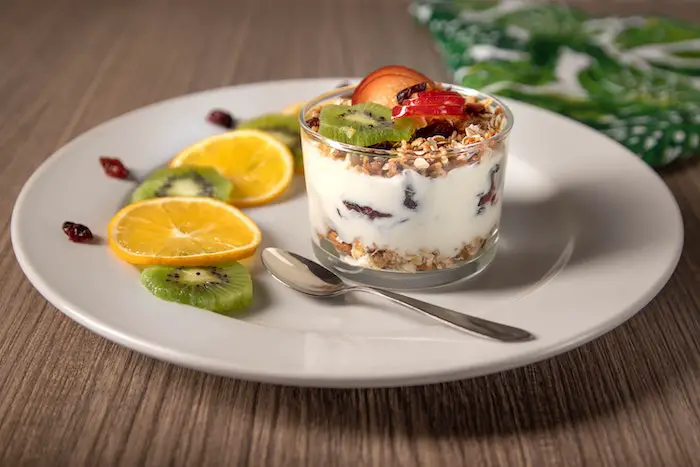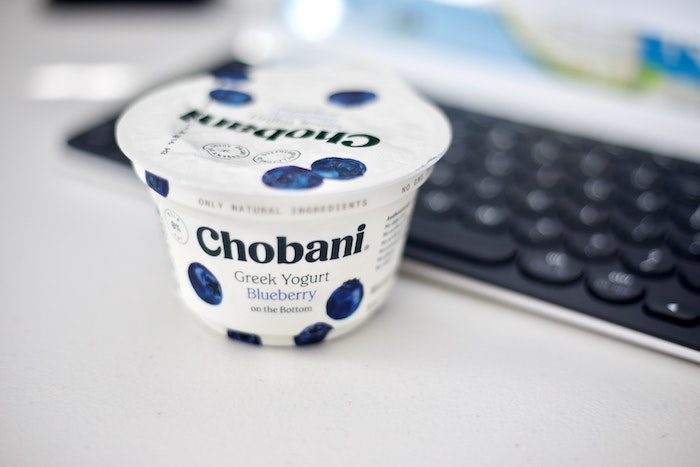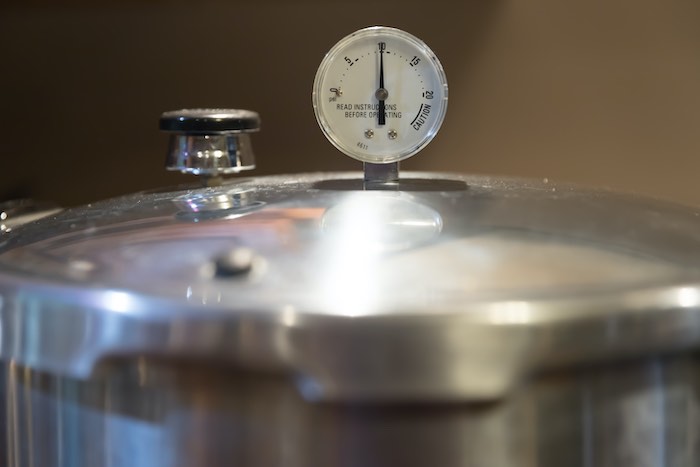Greek yogurt is a unique dairy product that’s versatile, dense, and chock full of protein. It’s easier on your digestion and provides a wide array of uses in various recipe options. However, when you open a container of Greek yogurt, you’ll notice there’s primarily just a packed wad of yogurt. If you try to lift some out with a spoon it may come out in little chunks, too.
So, is Greek yogurt chunky? Greek yogurt isn’t chunky per se, but it can be. However, once you stir it up or blend it, it should be thick, rich, and smooth. If there are chunks after stirring, this could be a sign of spoilage. In this case, this means your yogurt may have gone bad and be well past its expiration date.
If you’ve never had Greek yogurt before, you’re in for a treat! Therefore, don’t get disheartened by its appearance just yet. Give it a good stir with a sturdy spoon and you’ll see it become as smooth as silk. When you taste it, it’s almost like ice cream but with a tangy twist.
What is Greek Yogurt?
Greek yogurt is a blend of water, milk, and cream which undergoes straining several times. This removes the whey and produces a thick, dense, and rich product that’s creamy and smooth. It also has a high concentration of milk fat, ranging between 4% and 10%. Most other yogurts don’t exceed 3.5%.
However, Greek yogurt is also high in protein, full of beneficial bacteria, and far healthier for the body overall compared to many other similar options. The process of straining is also what gives it its somewhat tangy taste.
How Greek Yogurt is Different From Other Yogurt Styles
There are five aspects to Greek yogurt that make it different than other styles of yogurt. These are its texture, versatility, increased protein content, density, and probiotic enzymes.
- Texture – The typical texture of Greek yogurt is rich, thick, and smooth. However, while waiting in the store for purchase, the water will separate from the yogurt. Therefore, it can appear rather chunky until you stir it up. In general, though, chunkiness is not the normal state of Greek yogurt.
- Versatility – The recipe possibilities are endless when it comes to what you can put Greek yogurt into. It’s an ideal ingredient for both sweet and savory dishes. You can use it in cream sauces or for smoothies. Greek yogurt can even be a substitute for sour cream or crème fraiche.
- Increased Protein – Greek yogurt has far more protein than any other type of yogurt, too. This is because the intense straining process actually increases the protein content. This means there are about 20 grams of protein per cup, whereas the average yogurt has only 13 grams.
- Probiotics – Additionally, there are fewer carbohydrates in Greek yogurt than other types of yogurt, and it has less lactose, the dairy sugar that tends to upset many people’s digestion. The process by which Greek yogurt comes about increases the amount of healthy probiotic enzymes that improve digestion.
- Density – Because of the straining it goes through, Greek yogurt is very dense. The straining process removes the whey, giving it the thick, rich consistency for which it’s famous. It may be a bit difficult to stir up at first, but once the separated water becomes incorporated again, it becomes a dreamy, smooth dessert or snack.
How to Tell If Greek Yogurt Has Gone Bad

If you’ve had a container of Greek yogurt sitting in your refrigerator and you don’t know if it’s bad or not, there are a few things you can do to test it.
Check the Expiration Date
First, look for the expiration date on the container to start gauging how long it should have left. If 30 days have long since passed the date estimated by the manufacturer, throw it out.
Check for Unusual Changes in Appearance
If the date is still within a reasonable range, open the container and give it a sniff. Does it smell like it’s sour (more so than the usual tanginess of yogurt)? Are there any white or gray furry spots inside? Is there a reddish or pinkish color lining the sides of the container? If you answered “yes” to any of these questions, throw it out.
Stir It Up to Check for Curdling
In the event that everything still checks out up to this point, grab a spoon and stir up the yogurt. Do you notice any chunks even after you stirred it well? If you notice curdled chunks even after you give it a good stir, then throw it out. If it returns to its smooth and creamy goodness sans a smell of souring, you’ll next want to try a bit of it on the tip of your tongue.
Tiny Taste Test
When trying your potentially sour Greek yogurt, it should still taste like yogurt with that familiar bit of tanginess. If you don’t recoil in horror at a rancid flavor, your Greek yogurt should likely be fine to eat.
What Greek Yogurt Should Look Like When Fresh
When you bring home a container of Greek yogurt, it should look like a big, thick, and dense wad of yogurt sitting entirely at the bottom of the container with a portion of water floating on top. This is normal for this type of yogurt. You will simply need to stir it well and incorporate all the water.
What is the Water on Top of Greek Yogurt?
When you first open a container of Greek yogurt, there’s a watery layer resting on top of the actual yogurt itself. This is liquid whey, and it remains after the milk has curdled. This is normal and not an indicator that the yogurt is bad or expired.
If you see this water on top, all you have to do is use a spoon or whisk to blend the watery liquid whey back into the yogurt.
Don’t Dump the Water!
DO NOT DUMP OUT THE WATER! This is where all the good probiotics are as well as other nutrients, minerals, etc. This is what helps preserve and keep the product good while it sits in the store and in your refrigerator. This liquid is a very beneficial byproduct that you do not want to throw away.
If you dump the water out before stirring it, not only will you remove all the good stuff, but you will also reduce its shelf life along with ensuring unending chunkiness. This whey water contains nine essential amino acids which makes it a complete protein. It’s also a fantastic source of vitamin B, and it is high in calcium.
Will Greek Yogurt Get Chunky If You Cook with It?
One of the best things about Greek yogurt is that it won’t curdle or get chunky when you cook with it. Additionally, it won’t separate so long as you stir it well before you cook with it. If your Greek yogurt gets chunky when you cook with it, you’ve likely also added something like flour or cornstarch to the recipe. Most recipes that call for Greek yogurt will take into account the ingredient’s traits and have you add it at the most suitable time during the cooking process to ensure maximum creaminess as well as a lack of unusual behavior if it’s exposed to heat.
If your Greek yogurt appears to immediately curdle when trying to cook with it or use it in various recipes, this could be a sign that it has gone bad, and you should stop cooking with it immediately. Your final dressing or sauce should be thick and rich, but also smooth and creamy. The tanginess shouldn’t be evident in many cases either, depending upon the spices and seasonings used.
Conclusion
Greek yogurt is not chunky at the outset, although it can be when you first bring it home. Your yogurt will definitely be chunky if you dump out the water floating at the top when you first open it. However, in general, Greek yogurt should not be chunky unless it’s curdling and has expired past the manufacturer’s recommended date on the packaging.
See Also:
How To Cook Bacon Without Smoke? (2 Ways)
10 Uses For Violet Sea Salt
Is Defrosting Meat In The Sun Bad?
Can Silicone Bakeware Go In A Toaster Oven?


